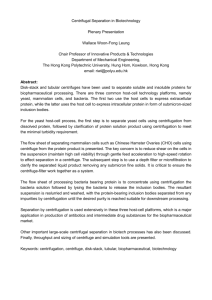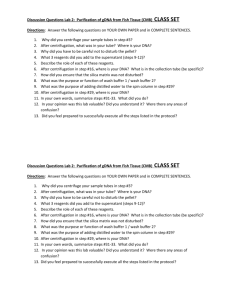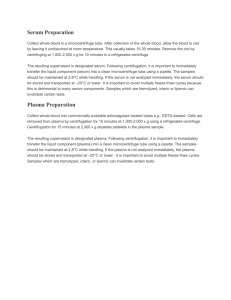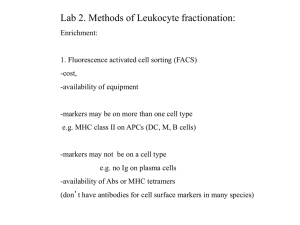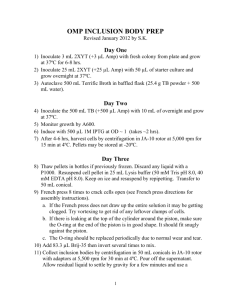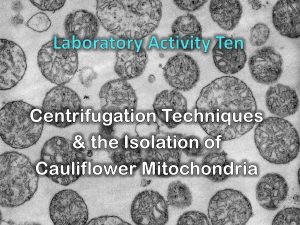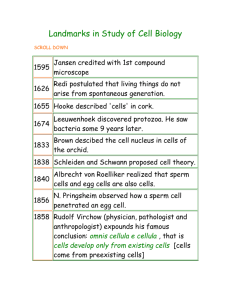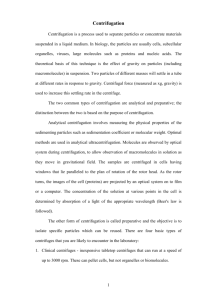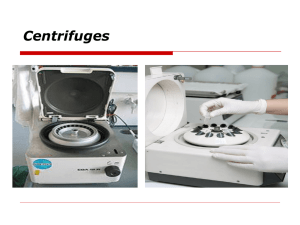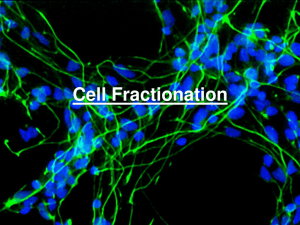CENTRIFUGATION
advertisement
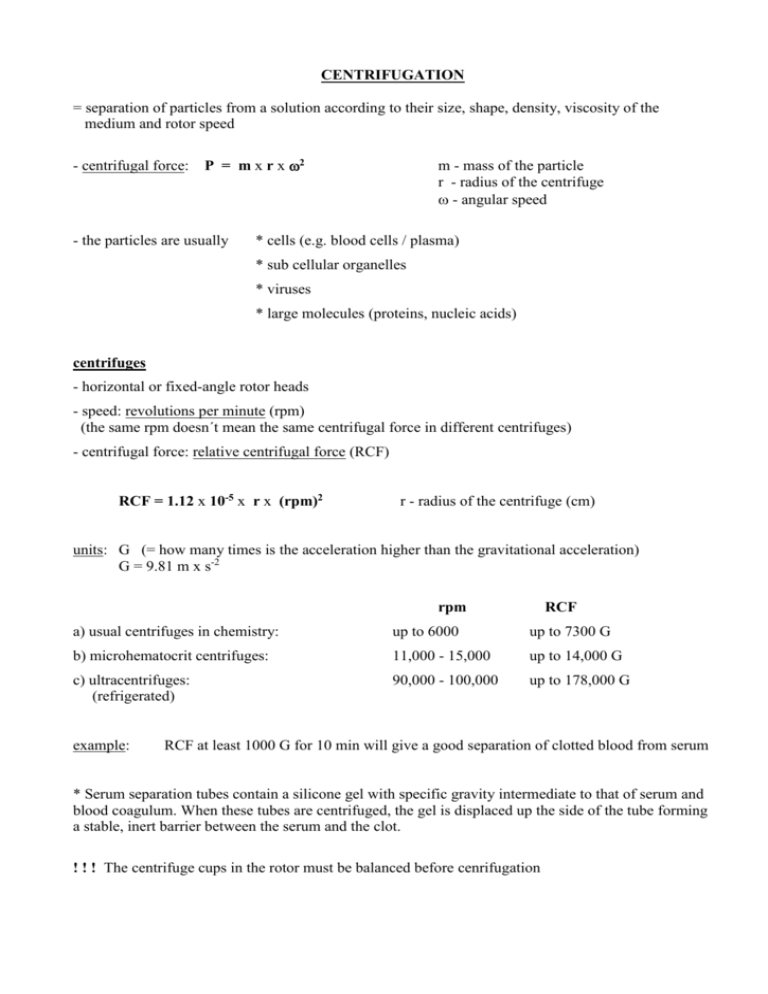
CENTRIFUGATION = separation of particles from a solution according to their size, shape, density, viscosity of the medium and rotor speed - centrifugal force: P = m x r x 2 - the particles are usually m - mass of the particle r - radius of the centrifuge - angular speed * cells (e.g. blood cells / plasma) * sub cellular organelles * viruses * large molecules (proteins, nucleic acids) centrifuges - horizontal or fixed-angle rotor heads - speed: revolutions per minute (rpm) (the same rpm doesn´t mean the same centrifugal force in different centrifuges) - centrifugal force: relative centrifugal force (RCF) RCF = 1.12 x 10-5 x r x (rpm)2 r - radius of the centrifuge (cm) units: G (= how many times is the acceleration higher than the gravitational acceleration) G = 9.81 m x s-2 rpm RCF a) usual centrifuges in chemistry: up to 6000 up to 7300 G b) microhematocrit centrifuges: 11,000 - 15,000 up to 14,000 G c) ultracentrifuges: (refrigerated) 90,000 - 100,000 up to 178,000 G example: RCF at least 1000 G for 10 min will give a good separation of clotted blood from serum * Serum separation tubes contain a silicone gel with specific gravity intermediate to that of serum and blood coagulum. When these tubes are centrifuged, the gel is displaced up the side of the tube forming a stable, inert barrier between the serum and the clot. ! ! ! The centrifuge cups in the rotor must be balanced before cenrifugation Classification of centrifugation - based on the purpose of centrifugation 1) analytical centrifugation 2) preparative centrifugation analytical centrifugation - it involves a measuring of the physical properties of the sedimenting particles (sedimentation coefficient, MW) - ultracentrifugation is optimal - molecules are observed by optical system during centrifugation and projected on to a film or a computer preparative centrifugation - separation of particles from a solution: we obtain two fractions called a sediment (pellet, solid phase) and a supernatant (liquid phase) * special kind of the preparative centrifugation: differential centrifugation (= moving boundary, rate-zonal c.) - it is used for a separation of cell organelles which differ in size and density - large, dense structures form a sediment (pellet) in a centrifuge tube faster (low RCF is enough for separation) than small, less dense ones do supernatant obtained from a low speed centrifugation is centrifugated again (a number of time) using a higher RCF

